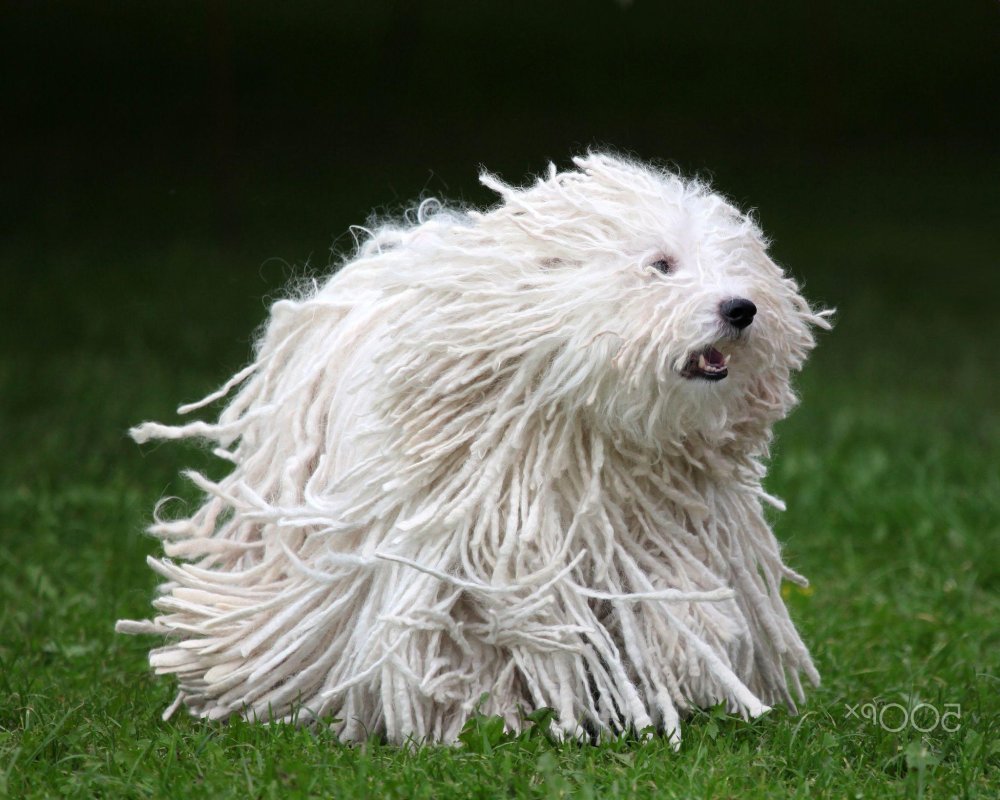- Breed Category: Herding
- Country of Origin: Hungary
- Average Height: Males 41-46 cm, Females 38-43 cm
- Average Weight: Males 13-16 kg, Females 10-13 kg
- Average Life Span: 12-16 years
- Grooming Requirements: Regular cord maintenance needed
- Exercise Requirements: High, needs daily exercise
- Coat Type: Long, corded
- Coat Color Variations: Black, white, grey, fawn
- Shedding Level: Low
- Ear Type: Medium, V-shaped
- Tail Type: Curled over back
- Temperament: Energetic, loyal, intelligent
- Intelligence Level: High
- Barking Tendency: Moderate
- Compatibility with Children: Good with proper socialisation
- Compatibility with Other Pets: Generally good
- Training Ease: Requires consistent training
- Common Health Issues: Hip dysplasia, eye disorders
- Dietary Needs: Balanced diet, watch weight
- Energy Level: Very high
- Drooling Tendency: Low
- Sensitivity to Weather: Tolerates cold, sensitive to heat
- Overall Maintenance Level: Moderate to high
- Original Purpose: Herding livestock
- Year of Recognition by Kennel Clubs: 1936
- Apartment Friendly: Yes, with sufficient exercise
- Best Suited For: Active families, rural settings
- Cost of Ownership: Moderate
- Unique Traits: Corded coat, agile herder
- Cultural Significance: National treasure of Hungary
- Popularity Rank: Moderately popular
Did you know that the Hungarian Puli can run up to 40 kilometres per hour? This agile and energetic breed is not just a bundle of energy but also a fascinating piece of history. Originating from Hungary, the Puli has been a loyal companion to shepherds for centuries, known for its distinctive corded coat and remarkable herding skills. This article aims to delve into the unique characteristics, rich history, and essential care tips for the Hungarian Puli. Whether you’re considering adding one to your family or simply curious about this intriguing breed, you’ll find everything you need to know right here. Let’s explore what makes the Puli a standout among dog breeds.
History and Origin of the Hungarian Puli
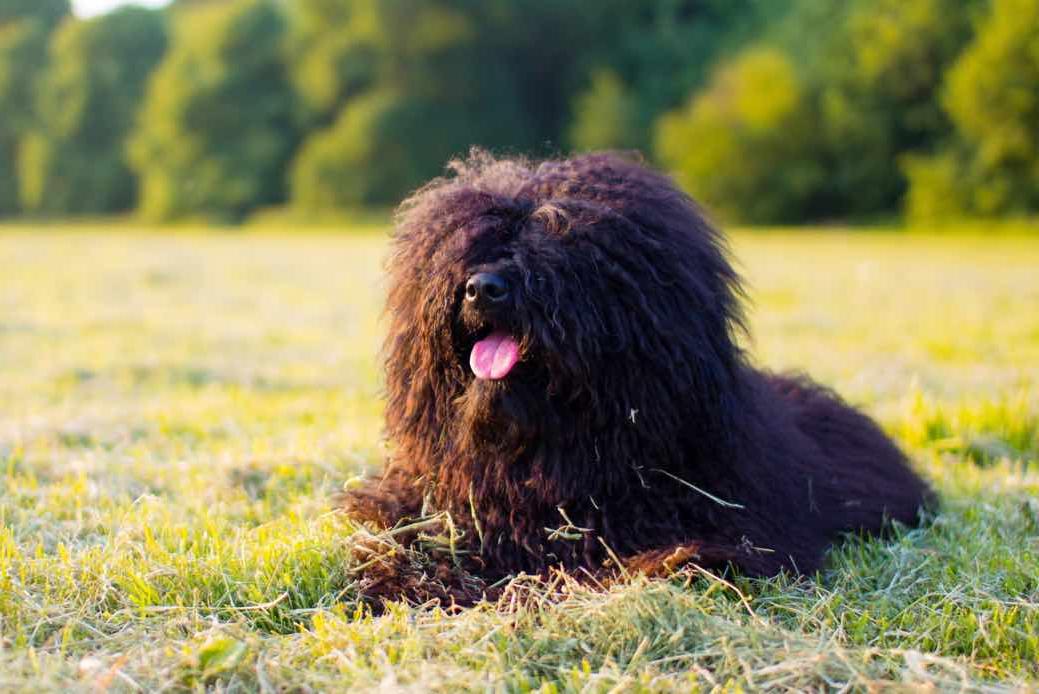
Early Development of the Breed
The Hungarian Puli has roots that stretch back over a thousand years. Originally brought to Hungary by the Magyars, this breed was developed for its herding prowess. The Puli’s unique corded coat wasn’t just for show; it provided protection against harsh weather and predators. Over time, these dogs became indispensable to Hungarian shepherds, prized for their intelligence and agility.
Role in Hungarian Herding and Farming
In the vast plains of Hungary, the Puli was more than just a herder; it was a partner. These dogs were adept at managing livestock, using their speed and agility to keep flocks in line. Their keen instincts and ability to work independently made them invaluable on farms, where they often worked alongside larger breeds like the Komondor.
Key Historical Figures and Events
Throughout history, the Puli has been celebrated in Hungarian culture. Notably, during the early 20th century, Dr. Emil Raitsits played a crucial role in preserving the breed. His efforts in establishing breed standards helped ensure the Puli’s survival and recognition worldwide. Today, the Puli remains a symbol of Hungarian heritage, admired for its unique appearance and enduring spirit.
Physical Characteristics of the Hungarian Puli

Appearance
The Hungarian Puli is a medium-sized dog, typically standing between 40 to 45 centimetres tall and weighing around 10 to 15 kilograms. Its most striking feature is the corded coat, which can come in shades of black, white, or grey. This coat isn’t just for looks; it serves as a protective layer against the elements, making the Puli well-suited for various climates.
Unique Physical Traits
One of the Puli’s standout traits is its agile and compact build. This breed is known for its remarkable speed and agility, which is why it excels in herding and agility sports. The Puli’s body is muscular yet light, allowing it to move with a surprising amount of grace and speed. Its distinctive coat, resembling dreadlocks, not only adds to its unique appearance but also provides a natural defence against harsh weather and potential predators.
Temperament and Behaviour of the Hungarian Puli

Typical Personality Traits
The Hungarian Puli is known for its loyalty and intelligence, making it a devoted companion. This breed is highly energetic, always ready for a game or a task. Its intelligence means it learns quickly, but it also requires mental stimulation to keep it happy. The Puli’s loyalty is unmatched, often forming strong bonds with its family.
Suitability as a Family Pet and Working Dog
As a family pet, the Puli is a great choice for active households. Its playful nature and love for activity make it a fun addition to any family. However, its herding instincts mean it thrives in environments where it has a job to do, whether that’s herding livestock or participating in dog sports. This dual capability makes it a versatile breed, suitable for both family life and work.
Interaction with Children and Other Animals
The Puli generally gets along well with children, especially if socialised from a young age. Its playful and protective nature makes it a good playmate and guardian. When it comes to other animals, early socialisation is key. The Puli’s herding instincts can sometimes lead to it trying to herd other pets, but with proper training, it can coexist peacefully with other animals.
Training and Exercise Needs of the Hungarian Puli
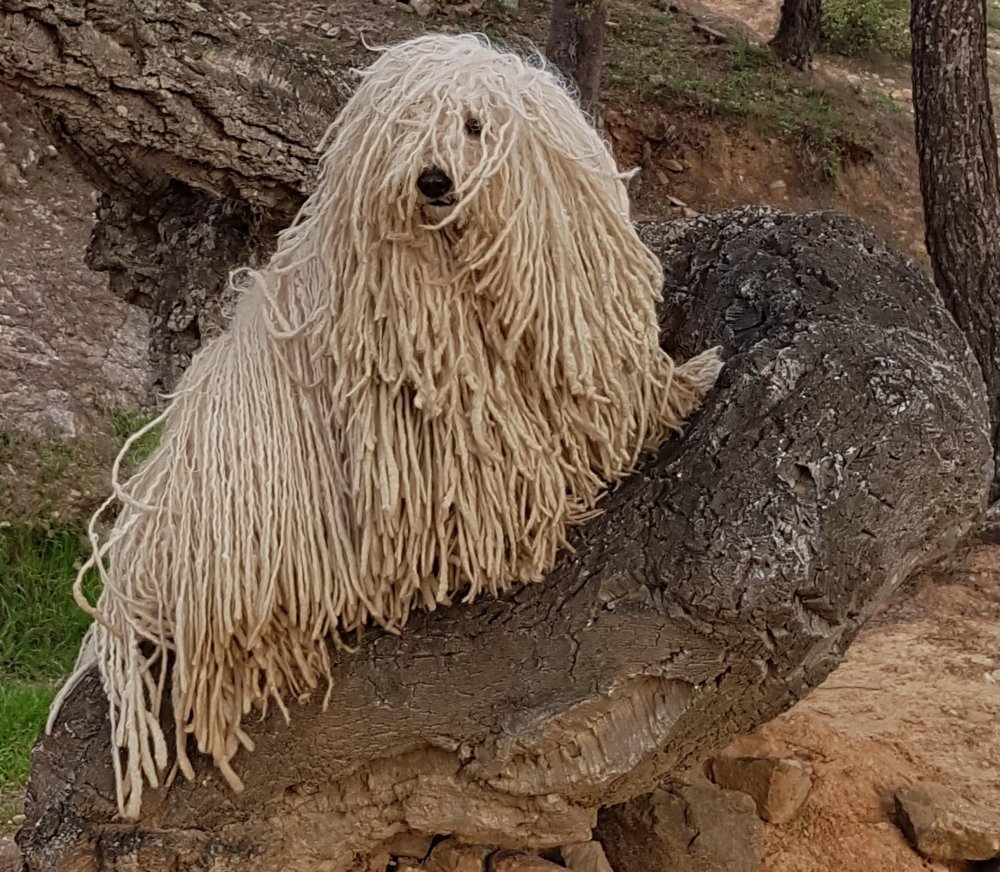
Importance of Early Training and Socialisation
Getting your Puli started with training and socialisation early on is crucial. These dogs are smart and eager to learn, but they can also be a bit headstrong. Introducing them to different people, places, and other animals while they’re young helps them grow into well-rounded adults. This early exposure is key to preventing any behavioural issues down the line.
Recommended Training Techniques
When it comes to training, positive reinforcement is the way to go. Pulik respond well to treats, praise, and playtime as rewards. Keep training sessions short and fun to hold their attention. Consistency is important, so make sure everyone in the household is on the same page with commands and rules.
Daily Exercise Requirements and Activities They Enjoy
Pulik are energetic and need plenty of exercise to stay happy and healthy. Aim for at least an hour of physical activity each day. They love activities like agility courses, fetch, and long walks. Mental stimulation is just as important, so consider puzzle toys or training games to keep their minds sharp.
Health and Lifespan of the Hungarian Puli
Common Health Issues
The Hungarian Puli is generally a healthy breed, but like all dogs, it can be prone to certain health issues. Hip dysplasia is one concern, where the hip joint doesn’t fit together perfectly, potentially leading to arthritis. Eye problems, such as progressive retinal atrophy, can also occur. Regular vet check-ups are essential to catch any issues early.
Average Lifespan and Health Tips
Pulik typically live between 12 to 16 years. To keep them healthy, a balanced diet and regular exercise are crucial. Their corded coat requires special attention; regular grooming helps prevent matting and keeps their skin healthy. Mental stimulation is just as important as physical activity, so engage them with interactive toys and training exercises.
Preventative Care Recommendations
- Schedule regular vet visits for vaccinations and health screenings.
- Maintain a consistent grooming routine to manage their unique coat.
- Provide a balanced diet tailored to their age and activity level.
- Ensure they get plenty of exercise and mental stimulation daily.
- Consider joint supplements if recommended by your vet, especially as they age.
Grooming and Maintenance of the Hungarian Puli
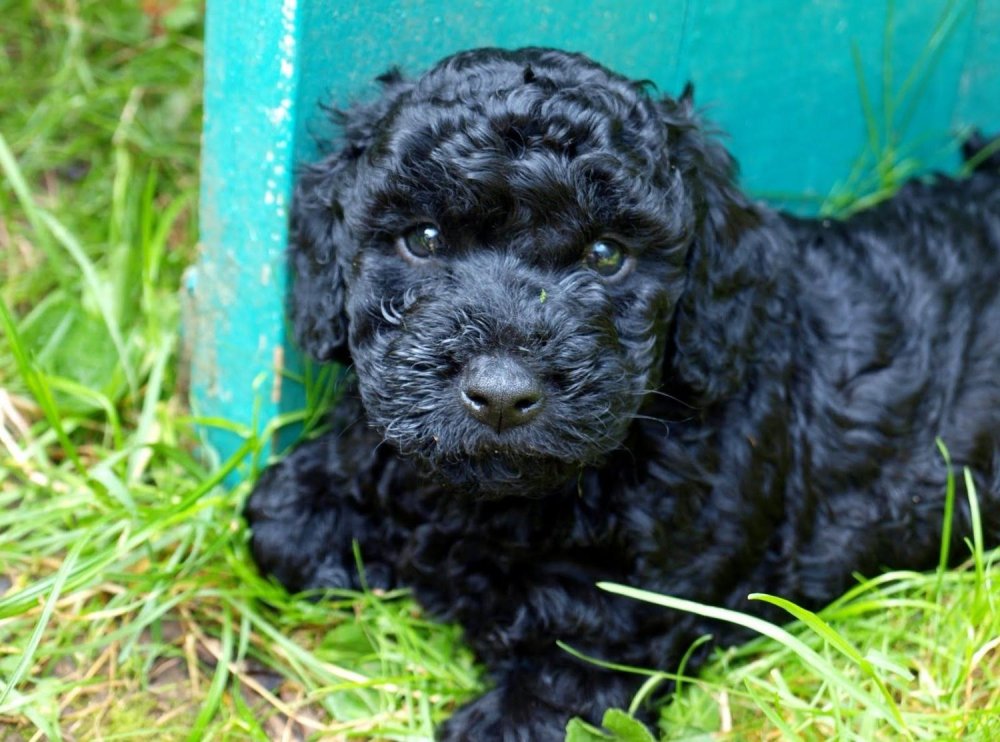
Coat Care and Grooming Routines
The Puli’s iconic corded coat is its most distinctive feature, but it requires regular attention to keep it in top condition. Start grooming your Puli from a young age to get them used to the process. Regularly separate the cords to prevent matting and ensure the skin underneath stays healthy. Bathing should be done sparingly, as the coat takes a long time to dry. When you do bathe them, use a gentle dog shampoo and make sure to rinse thoroughly.
Shedding and Seasonal Grooming Tips
Unlike many breeds, the Puli doesn’t shed in the traditional sense. Instead, its cords grow continuously, requiring regular trimming to maintain a manageable length. Seasonal changes can affect the coat, so be prepared for more frequent grooming during these times. In warmer months, consider trimming the cords shorter to help your Puli stay cool. Regular grooming not only keeps your Puli looking its best but also strengthens the bond between you and your furry friend.
Diet and Nutrition for the Hungarian Puli
Nutritional Needs for Optimal Health
Feeding your Puli a balanced diet is key to keeping them healthy and energetic. They need a mix of proteins, fats, and carbohydrates, along with essential vitamins and minerals. High-quality commercial dog food often meets these needs, but always check the label for a good balance of nutrients.
Foods to Include and Avoid
Include lean meats like chicken or fish, whole grains, and vegetables in their diet. These provide the necessary energy and nutrients. Avoid foods high in fat and sugar, as well as those that are toxic to dogs, like chocolate, onions, and grapes. Always ensure fresh water is available.
Feeding Schedules and Portion Recommendations
Establish a regular feeding schedule to maintain your Puli’s health. Typically, two meals a day work well for adult Pulik. Puppies may need more frequent meals. Portion sizes depend on their age, weight, and activity level, so consult your vet for specific recommendations. Keep an eye on their weight and adjust portions as needed to prevent obesity.
Fun Facts and Trivia about the Hungarian Puli
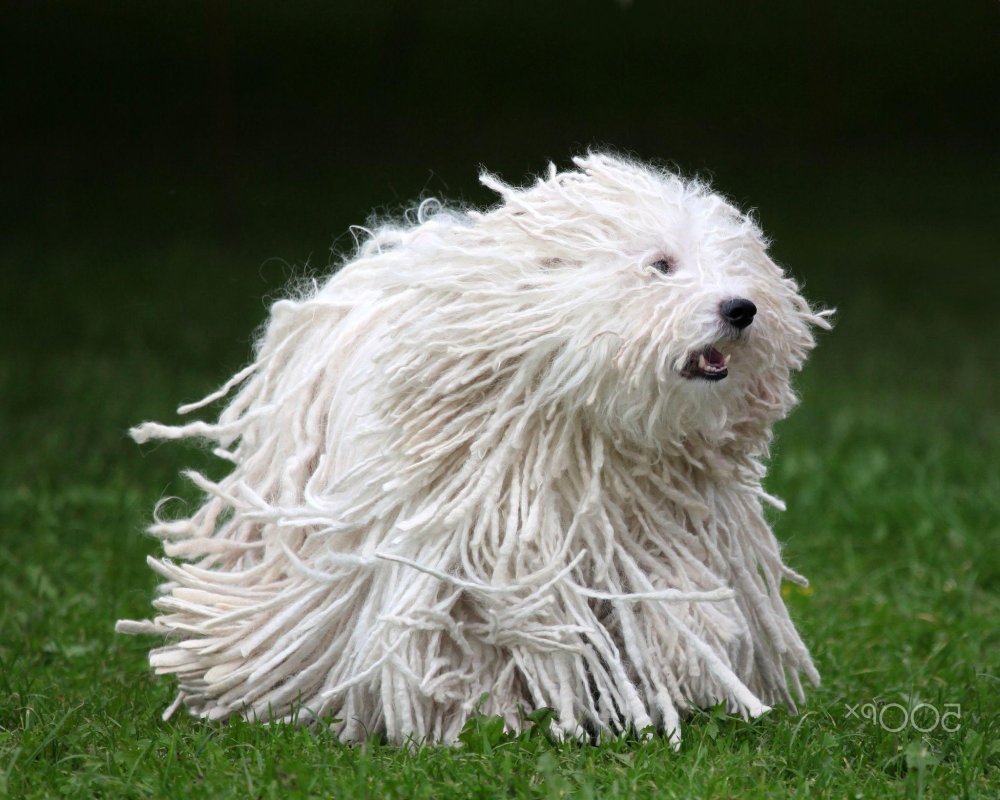
Interesting Tidbits about the Breed
The Hungarian Puli is often mistaken for a mop due to its unique corded coat, which serves as a natural barrier against harsh weather. This breed is not just about looks; it’s known for its incredible agility and speed, making it a standout in dog sports. Did you know that Pulik are excellent swimmers? Their dense coat might suggest otherwise, but they can glide through water with ease.
Famous Hungarian Pulik in Media or History
One of the most famous Pulik was “The Dog Who Saved Hollywood,” a Puli named “The Wizard of Oz” who appeared in several films during the 1930s. In more recent times, a Puli named “Beast” gained fame as the pet of Facebook founder Mark Zuckerberg. These dogs have also been featured in Hungarian folklore and art, symbolising loyalty and intelligence. Their distinctive appearance and lively personality have made them favourites in various media, showcasing their charm and versatility.
Final Thoughts

The Hungarian Puli is a remarkable blend of history and agility. This breed’s unique corded coat and herding prowess make it a standout among dogs. While owning a Puli requires commitment to grooming and exercise, the rewards of companionship and loyalty are immense. Embracing the Puli’s energetic spirit and intelligence can lead to a fulfilling relationship for active families. Consider welcoming this national treasure into your home and experience the joy of a truly exceptional breed.
